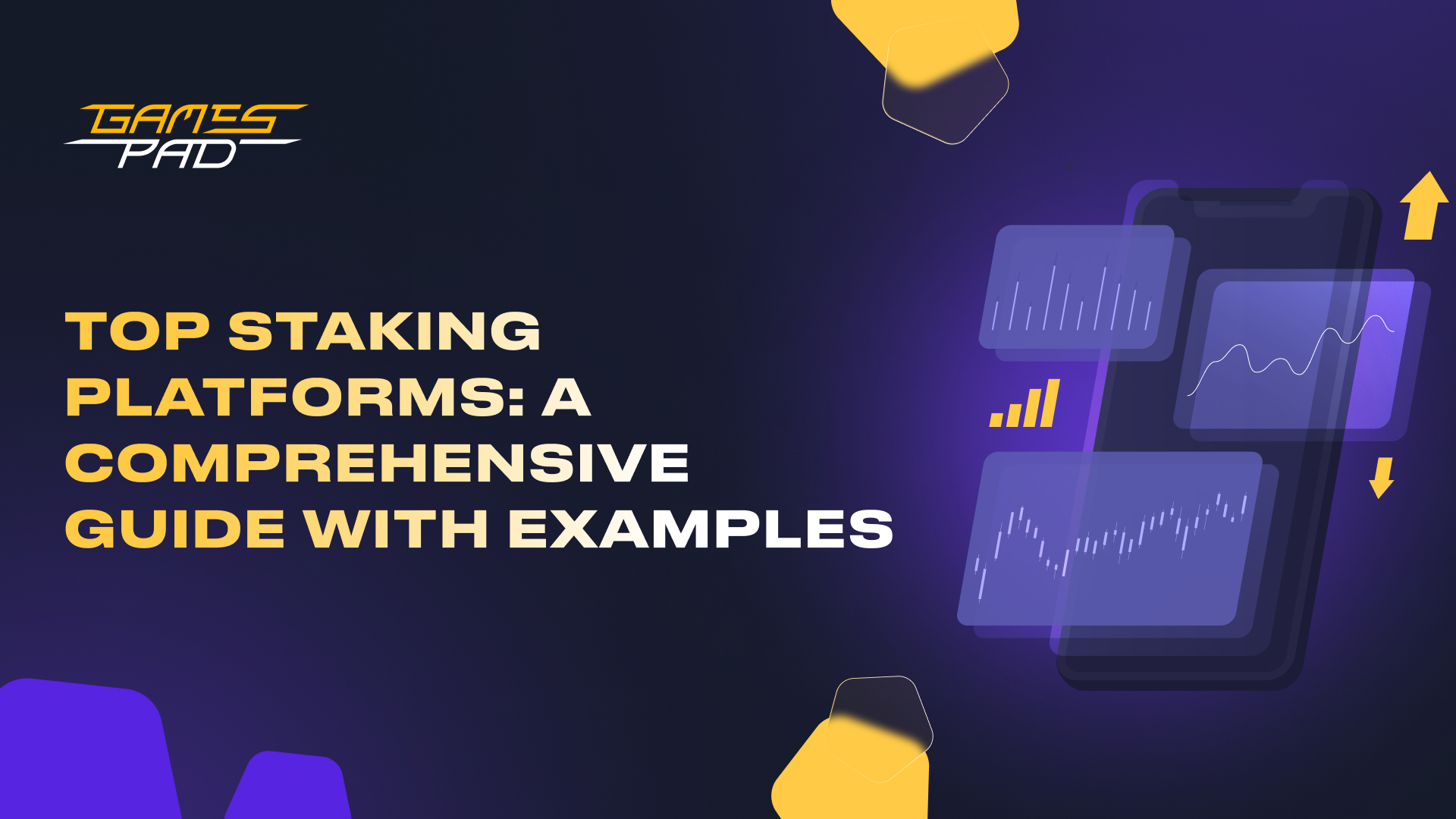How to Choose a Safe Staking Platform

- Understanding the Risks of Staking Platforms
- Key Factors to Consider When Choosing a Staking Platform
- Researching the Reputation of Staking Platforms
- Comparing Staking Platform Fees and Rewards
- Security Features to Look for in a Staking Platform
- Tips for Safely Staking Your Cryptocurrency
Understanding the Risks of Staking Platforms
When considering staking platforms, it is crucial to understand the risks involved. While staking can be a profitable way to earn passive income, there are potential pitfalls that investors should be aware of. One of the main risks of staking platforms is the possibility of losing your investment. This can happen if the platform is not secure or if there are vulnerabilities that hackers can exploit. It is essential to thoroughly research any platform before investing your funds to ensure that it has a solid reputation and a track record of security.
Another risk to consider is the volatility of the cryptocurrency market. Prices can fluctuate wildly, which can impact the value of your staked assets. It is important to be prepared for these fluctuations and to have a plan in place for managing risk. Additionally, some staking platforms may have hidden fees or charges that can eat into your profits. Be sure to read the fine print and understand all the costs associated with staking on a particular platform.
Furthermore, regulatory risks are also a concern when it comes to staking platforms. Depending on the jurisdiction in which the platform operates, there may be legal uncertainties or restrictions that could impact your ability to stake. It is important to be aware of the regulatory environment and to ensure that you are in compliance with all relevant laws and regulations.
In conclusion, while staking platforms can offer a lucrative opportunity for investors, it is essential to understand and mitigate the risks involved. By conducting thorough research, staying informed about market trends, and being aware of potential regulatory issues, investors can make informed decisions and protect their investments.
Key Factors to Consider When Choosing a Staking Platform
When selecting a staking platform, there are several key factors to consider to ensure the safety and reliability of your investment. One important factor to keep in mind is the platform’s reputation in the cryptocurrency community. Look for platforms that have a proven track record of security and trustworthiness. Additionally, consider the platform’s user interface and ease of use. A user-friendly platform will make it easier for you to navigate and stake your assets effectively.
Another crucial factor to consider is the platform’s staking rewards and fees. Compare different platforms to see which offers the most competitive rewards for staking your assets. Be wary of platforms that charge high fees, as this can eat into your profits over time. It’s also important to consider the platform’s security measures. Look for platforms that offer two-factor authentication and other security features to protect your assets from potential threats.
Furthermore, consider the platform’s customer support options. In case you encounter any issues or have questions about the staking process, it’s essential to have access to reliable customer support. Look for platforms that offer responsive customer service through multiple channels, such as email, live chat, or phone support. Lastly, consider the platform’s overall reputation and reviews from other users. Look for feedback from other investors to get a sense of the platform’s performance and reliability. By considering these key factors, you can choose a safe and secure staking platform for your cryptocurrency investments.
Researching the Reputation of Staking Platforms
When researching the reputation of staking platforms, it is crucial to delve into various sources of information to ensure the platform is safe and reliable. One way to assess a staking platform’s reputation is by reading reviews from other users. Look for feedback on forums, social media, and review websites to get a sense of the experiences others have had with the platform.
Additionally, consider checking the platform’s track record and history. Look for any past security breaches or incidents that may have occurred. A platform with a clean history and a strong reputation for security is more likely to be a safe choice for staking your assets.
Furthermore, it is essential to research the team behind the staking platform. Look into their experience, qualifications, and reputation in the industry. A team with a proven track record of success and expertise in blockchain technology is more likely to provide a secure and reliable staking platform.
In conclusion, conducting thorough research on the reputation of staking platforms is essential to ensure the safety of your assets. By reading reviews, checking the platform’s history, and researching the team behind the platform, you can make an informed decision and choose a safe staking platform for your investments.
Comparing Staking Platform Fees and Rewards
When comparing staking platform fees and rewards, it is essential to consider the overall value proposition offered by each platform. Some platforms may have lower fees but also provide lower rewards, while others may have higher fees but offer more significant rewards. It is crucial to strike a balance between fees and rewards to maximize your staking returns.
One way to compare staking platform fees and rewards is to calculate the annual percentage yield (APY) for each platform. The APY takes into account both the fees charged by the platform and the rewards earned through staking. By comparing the APY of different platforms, you can get a better understanding of which platform offers the best value for your investment.
Another factor to consider when comparing staking platform fees and rewards is the transparency of the platform. Look for platforms that provide clear information about their fees and rewards structure, as well as any potential risks associated with staking. Transparent platforms are more likely to be trustworthy and reliable, making them a safer choice for staking your assets.
In addition to fees and rewards, consider the overall reputation of the staking platform. Look for platforms that have a proven track record of reliability and security. Platforms with a strong reputation are less likely to engage in fraudulent activities or mismanage your staked assets, providing you with peace of mind when staking your funds.
Ultimately, when choosing a staking platform, it is essential to consider a combination of factors, including fees, rewards, transparency, and reputation. By carefully evaluating these factors, you can select a safe staking platform that offers a competitive APY and provides you with a secure and reliable staking experience.
Security Features to Look for in a Staking Platform
When selecting a staking platform, it is crucial to prioritize security features to safeguard your assets. Look for platforms that offer robust security measures to protect against potential threats and vulnerabilities. Some key security features to consider include:
– **Multi-factor authentication**: Opt for platforms that offer multi-factor authentication to add an extra layer of security to your account. This feature requires users to provide two or more forms of verification before accessing their accounts, making it more difficult for unauthorized individuals to gain access.
– **Cold storage**: Choose a staking platform that utilizes cold storage to store a significant portion of user funds offline. Cold storage helps prevent hacking attempts and unauthorized access to funds, as the assets are not connected to the internet.
– **Regular security audits**: Ensure that the staking platform conducts regular security audits to identify and address any potential vulnerabilities. Platforms that prioritize security audits demonstrate a commitment to protecting user assets and maintaining a secure environment for staking activities.
– **Insurance coverage**: Look for platforms that offer insurance coverage to protect user funds in the event of a security breach or hack. Insurance coverage provides an additional layer of protection and peace of mind for stakers, knowing that their assets are safeguarded in case of unforeseen circumstances.
By prioritizing security features such as multi-factor authentication, cold storage, regular security audits, and insurance coverage, you can choose a safe staking platform that prioritizes the protection of your assets. Remember to conduct thorough research and due diligence before selecting a platform to ensure that your staking activities are conducted in a secure and reliable environment.
Tips for Safely Staking Your Cryptocurrency
When it comes to safely staking your cryptocurrency, there are a few tips to keep in mind to ensure the security of your investments. Here are some best practices to follow:
- Choose a reputable staking platform: Look for platforms that have a proven track record of security and reliability. Do your research and read reviews from other users before committing to a platform.
- Enable two-factor authentication: Adding an extra layer of security to your account can help protect your assets from unauthorized access. Make sure to enable this feature on your staking platform.
- Use a hardware wallet: Consider staking your cryptocurrency using a hardware wallet for an added level of security. This physical device stores your private keys offline, making it difficult for hackers to access your funds.
- Diversify your investments: Instead of staking all your cryptocurrency in one platform, consider spreading your investments across multiple platforms. This strategy can help mitigate risk in case one platform experiences issues.
- Stay informed: Keep up to date with the latest news and developments in the cryptocurrency staking space. Being aware of any security threats or vulnerabilities can help you take precautionary measures to protect your assets.
By following these tips, you can securely stake your cryptocurrency and maximize your investment potential while minimizing risk.




